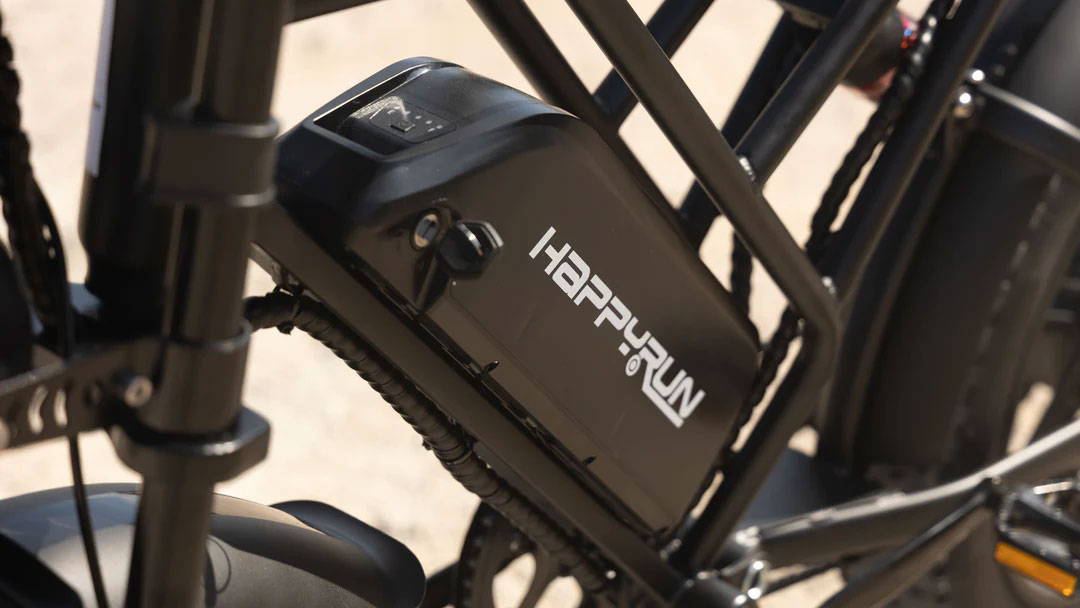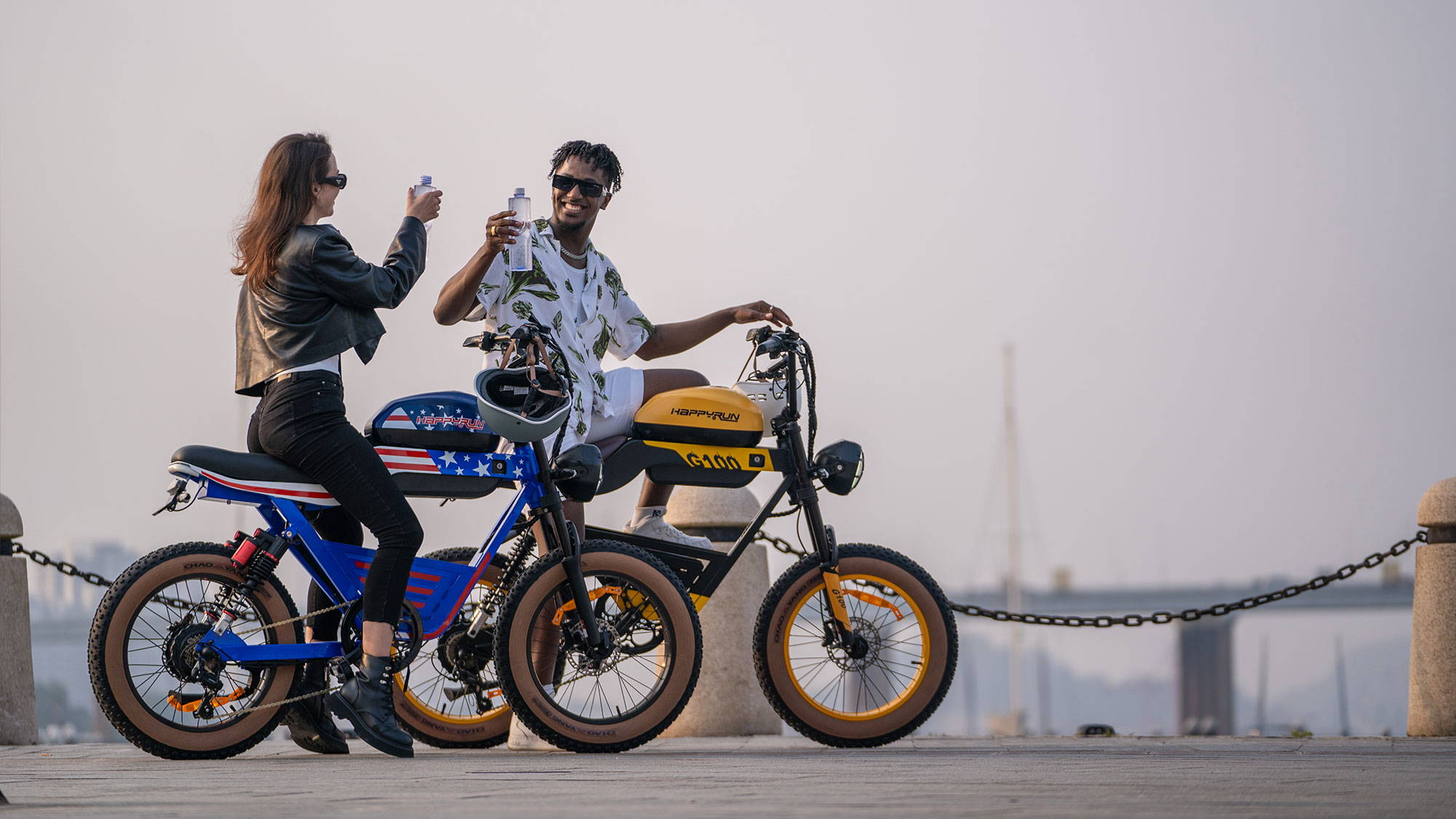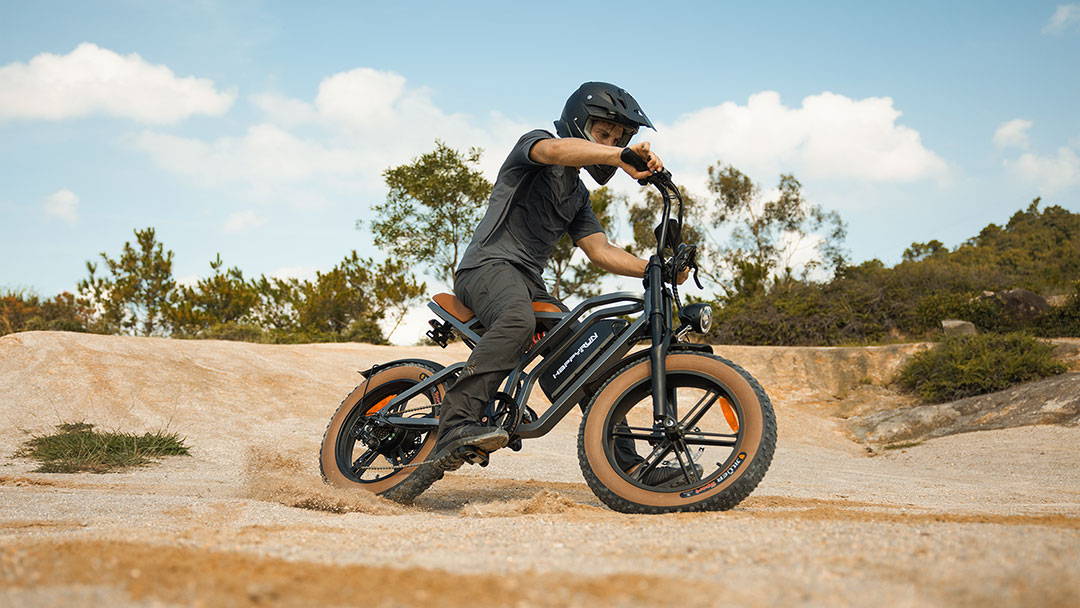
How Rider Weight Affects E-Bike Performance
Rider weight significantly impacts e-bike performance, affecting speed, battery life, and overall handling. Understanding how your weight interacts with an e-bike’s design can help you make informed choices for a safer and more enjoyable riding experience.
Hello, electric bike enthusiasts and cycling aficionados! Join me on this exciting journey through the ever-evolving world of e-bikes, where I’ll be your guide, sharing the latest news and fascinating insights. Get ready to explore the dynamic and rapidly changing landscape of electric biking!
Zooming Into Popularity:
We’re not just talking about a few hipsters in the hills of San Francisco anymore; e-bikes have hit the mainstream, big time! Since 1998, their popularity has surged faster than a Hollywood starlet’s rise to fame. The U.S. e-bike scene is really taking off! In 2022, the market was buzzing at a cool USD 1.98 billion, and guess what? It’s set to zoom even higher, with a predicted growth rate of 15.6% annually from 2023 to 2030. Why, you ask? Well, it’s not just the thrill-seekers and weekend adventurers driving this trend. More folks are hopping on e-bikes for their daily commutes, keen on reducing those pesky carbon footprints. Plus, Uncle Sam’s giving a thumbs up with some nifty incentives to make e-bikes the ride of choice. It’s not just a market; it’s a movement! That’s a lot of electric magic happening on the streets!
The Big Question: Weight Limits & Performance:
Looking for an e-bike that can handle more than just a light backpack? Or maybe you’re a bit of a heavyweight champ? No worries, we’ve got you covered. Most e-bikes can handle a combined weight of around 275 pounds – that’s rider, gear, and those extra burritos you picked up for lunch. 🌯 And for those who like to pack heavy or carry a buddy, cargo e-bikes can roll with up to 400 pounds! There is an e-bike for heavy riders that’s for sure!
Why Weight Matters:
Just like in an action-packed Hollywood car chase, weight plays a leading role in e-bike performance. Heavier riders might notice a bit of a dip in speed and range. It’s like comparing a sports car to a fully-loaded SUV – both are awesome, but they handle differently.
First off, let’s chat about what electric bike weight limits actually are. Picture this: You’re cruising down the streets, sun shining, breeze flowing, and your e-bike’s just humming along. That blissful experience? All your gratitude should go to the geniuses who figured out the perfect weight your e-bike can handle. This isn’t just the rider’s weight we’re talking about – it includes your backpack, those groceries, or even your fur baby in a basket!
But why should you care? Think of electric bike weight limits as the secret ingredient in your grandma’s famous recipe – it’s essential for perfection. Overloading your e-bike is like a surfer wiping out on a gnarly wave. It can mess with your ride’s safety, make it handle like a bulky VCR, and drain your battery faster than a Zack Morris phone call.
Definition of E-Bike Weight Limits:
- E-bike weight limits refer to the maximum weight capacity that an electric bike can safely handle. This includes the weight of the rider, any cargo or gear, and sometimes even the weight of the bike itself.
- The limits are set to ensure the safety and optimal performance of the e-bike.
Why Is It Important to Stay Within Weight Limits?
Staying within weight limits is crucial for safety and optimal performance. Exceeding these limits can compromise braking effectiveness, handling, and frame integrity. Additionally, it may lead to faster battery drain and reduced range, ultimately affecting the riding experience and longevity of the e-bike.
Staying within the recommended weight limits is vital for several reasons:
- Safety: Overloading can lead to mechanical failures, reduced control, and a higher risk of accidents.
- Performance: Exceeding the weight limit negatively impacts speed, range, battery life, and overall handling.
- Durability: Consistently overburdening an e-bike can lead to increased wear and tear, reducing its lifespan.
What Is the Average Weight Limit for E-Bikes?
The average weight limit for standard e-bikes typically ranges from 220 to 300 pounds (100 to 136 kilograms). However, specialized models, particularly cargo bikes, can support weights up to 400 pounds or more. It’s essential to check the manufacturer’s specifications to ensure safe riding.
How Manufacturers Determine Weight Limits:
- Engineering and Testing: Manufacturers use a combination of engineering principles and rigorous testing to determine the safe weight limits for each model.
- Frame and Component Strength: The strength and durability of the frame, wheels, and other components play a critical role in determining weight capacity.
- Motor and Battery Capabilities: The power and efficiency of the motor and battery also influence the weight limits, as they dictate how much load the bike can move and for how long.
- Intended Use: The purpose of the bike (e.g., commuting, cargo transport, off-road) guides manufacturers in setting appropriate electric bike weight limits.
How Does Rider Weight Affect E-Bike Performance?
Rider weight plays a crucial role in determining how well an e-bike performs. Heavier riders may experience reduced acceleration and speed, as the motor must work harder to maintain momentum. This increased demand can lead to faster battery depletion and diminished overall efficiency, especially on inclines or rough terrain.
How Does Rider Weight Influence Battery Life and Range?
Rider weight affects battery life and range because heavier loads require more energy to maintain speed. This increased power consumption can lead to faster battery depletion, reducing the distance an e-bike can travel on a single charge. Maintaining a lighter load helps optimize battery efficiency.
Heavier loads require more power from the motor to maintain speed and climb hills, resulting in:
- Increased power consumption.
- Reduced range per charge.
- Faster battery drain.
This means that heavier riders may need to charge their batteries more frequently than lighter riders.
What Are the Safety Implications of Exceeding Weight Limits?
Exceeding an e-bike’s weight limit can have serious safety implications. The increased load may compromise braking efficiency, making it harder to stop quickly. Additionally, overloading can lead to instability while riding, increasing the risk of accidents or falls.

HappyRun Electric Bike Battery
Acceleration: The Battery’s Nemesis
Here’s the scoop: Acceleration is like the big boss in a video game when it comes to draining your battery. When you hit the gas (or, well, the pedal), you’re asking your e-bike to work harder, especially if you’re carrying a few extra pounds. It’s like trying to run with a backpack full of rocks – tough, right? So, if you’re constantly speeding up, you’re going to see that battery bar drop faster than a hot potato.
Flat vs. Hills: The Weighty Challenge Now, let’s get real about terrain. Cruising on a flat road at a steady speed? Your weight’s impact on battery life is more like a chill background character – there, but not a big deal. But throw in some hills, and boom – it’s like stepping into the ring with a heavyweight boxer. More weight means more grunt needed to climb those inclines, and that’s when your battery really starts to feel the burn.
Stealthy Power Drains:
Ever think you’re just rolling along easy terrain? Well, those sneaky, undulating landscapes can secretly guzzle more power than you expect. Speed demons, beware: Constant hard acceleration and pedaling like you’re in the Tour de France downhill can chomp through your battery’s life faster than a shark in a feeding frenzy.
Weighing In on Battery Life Here’s a rad fact for you: Rider weights up to 280 pounds can zap up to 25% of your e-bike battery’s max capacity on flat ground. Hit the hills, and gravity becomes your arch-nemesis – your weight can seriously slash battery power and range. It’s like your e-bike is trying to bench press while climbing a mountain – tough job, right?
Agility and Handling:
We all love zipping through city streets or taking sharp turns. Lighter e-bikes are like nimble surfers riding the waves at Malibu – quick and responsive. Heavier ones? They’re more like a luxurious yacht cruising off the coast – stable but not as spry. Tighten up those e-bike saddle bags!
Range and Speed – The Dynamic Duo:
Just like a movie needs good pacing, your e-bike’s performance depends on weight. Lighter loads often mean longer ranges and zippier speeds. It’s all about finding that sweet spot for your electric bike top speed needs.
Maintenance Tips for E-Bike Battery Efficiency:
- Regularly check and maintain tire pressure.
- Store the e-bike with a sufficient battery charge.
- Be mindful of the e-bike’s weight capacity.
- Ride on flat roads when possible for optimal battery use.
- Keep the e-bike in good condition to ensure battery longevity.
Check out these totally gnarly e-bikes, the G100 and G60 SUV, that can handle the weight!

HappyRun Electric Motorcycle G100
HAPPY RUN TANK G100
The G100 is like the Swiss Army knife of e-bikes. This powerhouse comes with a dual battery setup, letting you cruise for up to 130 miles in pedal-assist mode or 70 miles going full electric. Feel the need for speed? This bad boy can hit over 50 mph, thanks to its beefy 2000W motor. And hills? Pfft, it laughs in the face of 30° slopes. But wait, there’s more! We’re talking adjustable suspension, top-notch hydraulic brakes, and super cool NFC smart unlocking. Elevate your commute with the latest long-range electric bike, a game-changer for heavy riders. This commuter e-Bike, equipped with a powerful throttle, offers unparalleled efficiency and comfort. Its robust design and extended battery life ensure a reliable, eco-friendly journey, making it the ideal choice for urban explorers
HAPPY RUN TANK G60

HappyRun Mountain Electric Bike Tank G60
Then there’s the G60 SUV E-bike, the off-road conqueror meets urban cruiser. This beast packs a 1500W motor, zipping up to 31 MPH. Built with lightweight aluminum alloy and a smooth fork suspension system, it’s the ride you need for any adventure. It’s got hydraulic brakes, a detachable 48V 18AH battery, and a huge smart LCD display for all your stats. And those 20″ x 4″ fat tires? They’re like your personal bodyguards against tricky terrains like sand, snow, you name it.
The cherry on top? Both these radical rides can carry up to 265lbs of rider. So, whether you’re cruising down the boulevard or tackling the trails, these e-bikes have got your back!
Which E-Bike Models Are Best for Heavier Riders?
For heavier riders, selecting robust models designed with higher weight capacities is crucial. Fat tire e-bikes are often ideal due to their enhanced stability and durability. These bikes feature wider tires that distribute weight more evenly and provide better shock absorption on rough terrain.
How Can Heavier Riders Optimize Their E-Bike Experience?
Heavier riders can optimize their e-bike experience by selecting models with high weight limits and powerful motors. Regular maintenance is key; ensuring proper tire pressure and brake functionality enhances safety. Additionally, adjusting riding techniques—like starting slowly—can improve balance and control on the bike.
Heavier riders can optimize their e-bike experience by:
- Choosing the Right Model: Look for bikes with higher weight limits and robust frames.
- Maintaining Proper Tire Pressure: Ensure tires are inflated correctly to improve handling and efficiency.
- Adjusting Riding Style: Consider riding at lower speeds on inclines or rough surfaces to reduce strain on the motor and battery.
Quick Guide to E-Bike Selection:
- Weighty Matters vs. Speed Thrills: Match your weight with the bike’s limit for the best speed experience.
- Height Fit vs. Smooth Rides: Choose a frame that fits you right for the comfiest cruise.
- Fitness Check vs. Battery Stretch: Know your fitness level to pick a battery that lasts your journey.
- Terrain Game vs. Motor Fame: Match the motor power to the toughness of your trails.
- Budget Talks vs. Feature Rocks: Balance your spend with the cool features you need.
- Ride Often vs. Tough Bikes: Frequent riders need sturdier bikes with less fuss.
- Easy Store vs. Lighter More: If you’re tight on space, go for lighter, easy-to-store options.
- Comfy Seats vs. Street Beats: Don’t let a cushy seat slow down your street rhythm.
- Style Flair vs. Practical Care: Look cool but don’t forget about the bike’s performance.
- Green Scene vs. Machine Clean: Eco-friendly is the way to go without losing the motor mojo.
- Keep it rad, keep it real, and happy e-biking!
Buying Tips
When purchasing an e-bike suitable for your needs:
- Check Weight Capacity: Ensure the bike’s specifications exceed your total riding weight by at least 10-15%.
- Consider Frame Strength: Look for models with sturdy frames designed for heavier loads.
- Evaluate Motor Power: Higher wattage motors perform better under heavy loads and on steep inclines.
- Explore Options from Trusted Brands: Brands like
HappyRun, known for their innovative designs over nine years in the market, offer excellent choices tailored for diverse riding needs.
E-Bike Expert Views
“Understanding how rider weight affects e-bike performance is essential for safety and enjoyment,” states Dr. John Taylor, an expert in cycling dynamics. “Choosing the right model not only enhances performance but also minimizes risks associated with overloading.”
Closing Thoughts: The Electric Future is Here!
As we pedal our way into the sunset of this electrifying blog post, let’s remember that the e-bike revolution is more than just a trend – it’s a lifestyle shift. Whether you’re a city slicker dodging traffic, a trailblazer on mountain paths, or someone looking to add a little zip to your daily commute, there’s an e-bike out there for you. With the HAPPY RUN TANK G100 and G60 leading the pack, the future of e-biking looks brighter, faster, and more exhilarating than ever.
But here’s the deal – it’s not just about having a cool ride. E-bikes represent a step forward in our collective journey towards a greener, more sustainable future. They’re a testament to human ingenuity, a solution to urban congestion, and a fun way to reduce our carbon footprint. Plus, let’s not forget, they’re an absolute blast to ride!
So, whether you’re a heavyweight champ or a lightweight speedster, remember to respect those weight limits, take care of your battery, and most importantly, enjoy the ride. The world of e-bikes is vast and varied, and there’s always a new path to explore, a new hill to conquer.
Stay rad, stay responsible, and let’s keep rolling towards an electric future. Until next time. Happy riding!
































Leave a comment